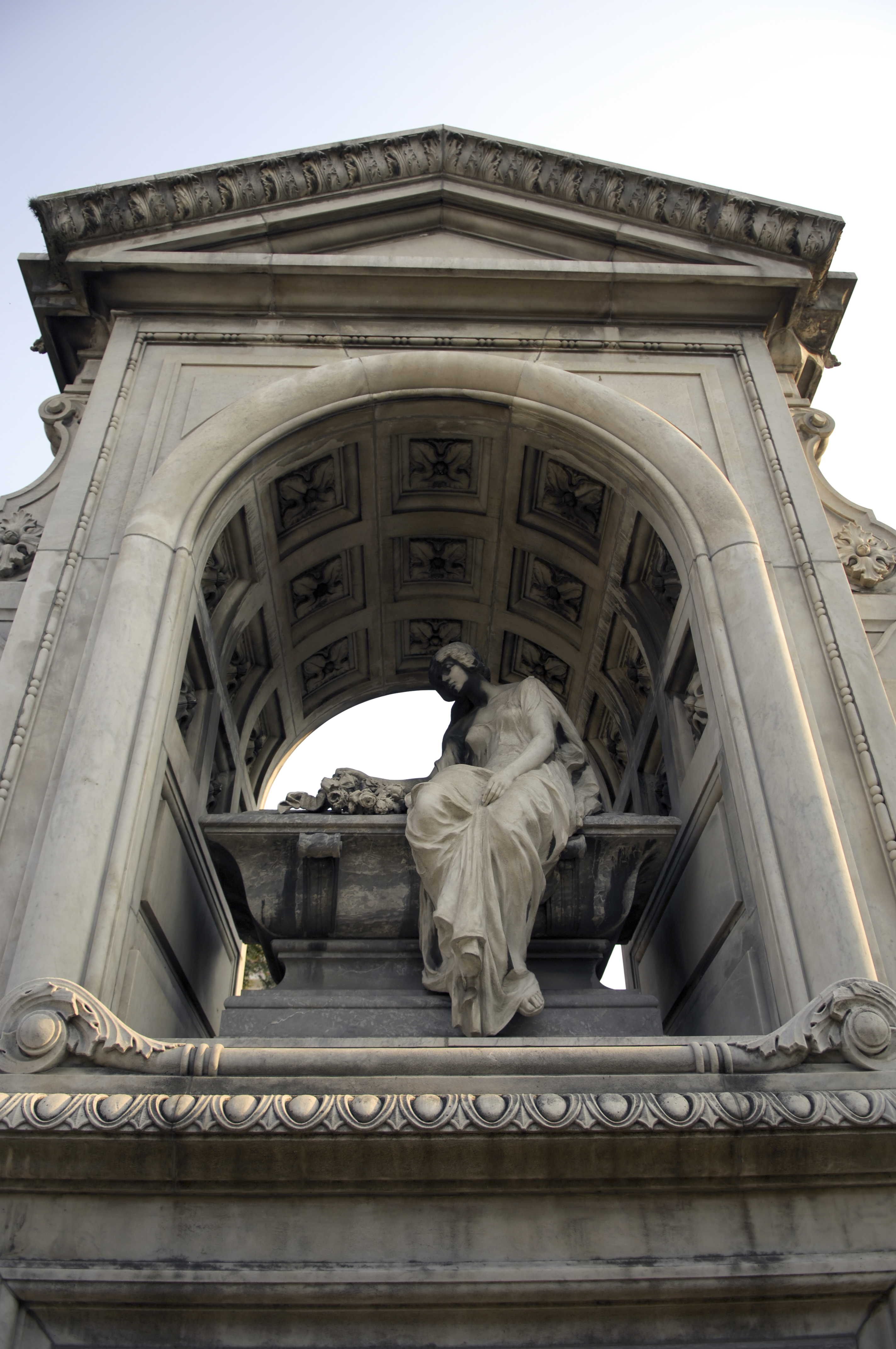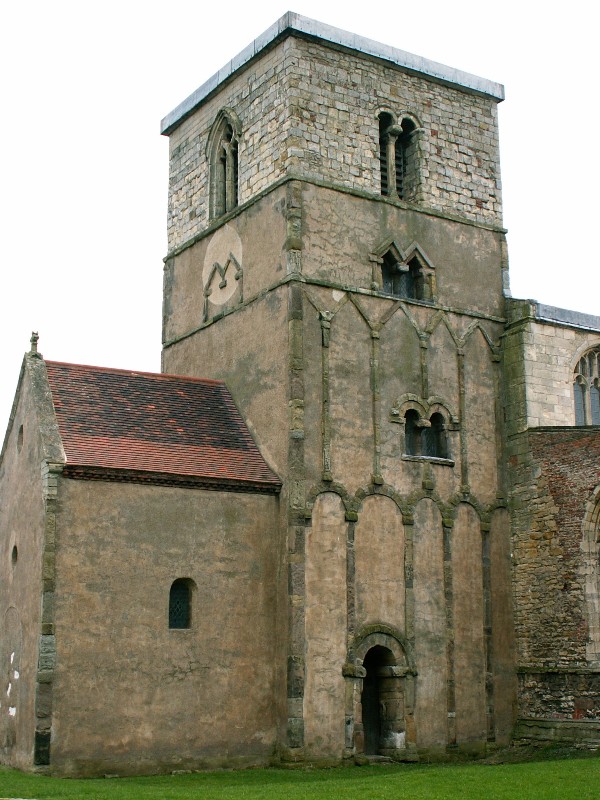|
High Bridge, Lincoln
High Bridge, also known as the Glory Hole, carries the High Street across the River Witham in the city of Lincoln in Lincolnshire, England. It is the oldest bridge in the United Kingdom on which buildings still stand. History The bridge was built around 1160. The ribs of the original bridge survive, making it possibly the second-oldest masonry arch bridge in Britain and certainly the oldest with intact buildings on it. Churches and other ecclesiastical buildings were not uncommon on or near medieval bridges but High Bridge is unusual in carrying a secular building.Barton, p. 99. The current row of timber framed shops on the west side of the bridge date from about 1550. Stokes Tea & Coffee have been custodians of the building since 1937. The two upper storeys of the shops are jettied forward and at the corners there are carved figures of angels. The shops were partly dismantled and re-erected in 1901–02 under the supervision of the Lincoln architect William Watkins. Bridg ... [...More Info...] [...Related Items...] OR: [Wikipedia] [Google] [Baidu] |
High Street, Lincoln
__NOTOC__ High Street in Lincoln, Lincolnshire, England extends from the St Catherine's roundabout and ends approximately 1.2 miles further north at The Strait. The historic High Street has evolved through many changes over its 2000 year history, encompassing Roman roads and settlement, medieval buildings, markets, places of worship, civic buildings, bridges, the arrival of the railways and heavy industry. The greatest concentration of listed buildings is north of the railway station in the pedestrianised area where most of the city's commercial, retail and cultural areas are located. South of the railway station there are fewer listed buildings the street is a busy urban road numbered the B1262. History High Street in Lincoln follows the route of Ermine Street, a major Roman road that linked London (Londinium) to Lincoln (Lindum Colonia) and onwards to the Humber. Ermine Street was built between 60 and 90 AD. It was joined south of Lincoln by the Fosse Way. The Roman ... [...More Info...] [...Related Items...] OR: [Wikipedia] [Google] [Baidu] |
Barrel Vault
A barrel vault, also known as a tunnel vault, wagon vault or wagonhead vault, is an architectural element formed by the extrusion of a single curve (or pair of curves, in the case of a pointed barrel vault) along a given distance. The curves are typically circular in shape, lending a semi-cylindrical appearance to the total design. The barrel vault is the simplest form of a vault: effectively a series of arches placed side by side (i.e., one after another). It is a form of barrel roof. As with all arch-based constructions, there is an outward thrust generated against the walls underneath a barrel vault. There are several mechanisms for absorbing this thrust. One is to make the walls exceedingly thick and strong – this is a primitive and sometimes unacceptable method. A more elegant method is to build two or more vaults parallel to each other; the forces of their outward thrusts will thus negate each other. This method was most often used in construction of churches, where sev ... [...More Info...] [...Related Items...] OR: [Wikipedia] [Google] [Baidu] |
Scheduled Monuments In Lincolnshire
There are 588 scheduled monuments in the county of Lincolnshire, England. These scheduled monument, protected sites date in some cases from the Neolithic period, and include Tumulus, barrows, artillery forts, ruined abbeys, castles, and Iron Age Hillforts in Britain, hill forts. In the United Kingdom, the scheduling of monuments was first initiated to ensure the preservation of "nationally important" archaeological sites and historic buildings. Protection is given to scheduled monuments under the Ancient Monuments and Archaeological Areas Act 1979. Notable scheduled monuments in Lincolnshire See also *Grade I listed buildings in Lincolnshire *List of scheduled monuments, List of scheduled monuments in the United Kingdom References {{Lincolnshire Scheduled monuments in Lincolnshire, Lists of scheduled monuments in England, Lincolnshire ... [...More Info...] [...Related Items...] OR: [Wikipedia] [Google] [Baidu] |
Bridges With Buildings
A bridge is a structure built to span a physical obstacle (such as a body of water, valley, road, or railway) without blocking the path underneath. It is constructed for the purpose of providing passage over the obstacle, which is usually something that is otherwise difficult or impossible to cross. There are many different designs of bridges, each serving a particular purpose and applicable to different situations. Designs of bridges vary depending on factors such as the function of the bridge, the nature of the terrain where the bridge is constructed and anchored, the material used to make it, and the funds available to build it. The earliest bridges were likely made with fallen trees and stepping stones. The Neolithic people built boardwalk bridges across marshland. The Arkadiko Bridge, dating from the 13th century BC, in the Peloponnese is one of the oldest arch bridges in existence and use. Etymology The ''Oxford English Dictionary'' traces the origin of the word ''bridge' ... [...More Info...] [...Related Items...] OR: [Wikipedia] [Google] [Baidu] |
Buildings And Structures In Lincoln, England
A building or edifice is an enclosed structure with a roof, walls and windows, usually standing permanently in one place, such as a house or factory. Buildings come in a variety of sizes, shapes, and functions, and have been adapted throughout history for numerous factors, from building materials available, to weather conditions, land prices, ground conditions, specific uses, prestige, and aesthetic reasons. To better understand the concept, see ''Nonbuilding structure'' for contrast. Buildings serve several societal needs – occupancy, primarily as shelter from weather, security, living space, privacy, to store belongings, and to comfortably live and work. A building as a shelter represents a physical separation of the human habitat (a place of comfort and safety) from the ''outside'' (a place that may be harsh and harmful at times). buildings have been objects or canvasses of much artistic expression. In recent years, interest in sustainable planning and building pract ... [...More Info...] [...Related Items...] OR: [Wikipedia] [Google] [Baidu] |
Grade I Listed Bridges
Grade most commonly refers to: * Grading in education, a measurement of a student's performance by educational assessment (e.g. A, pass, etc.) * A designation for students, classes and curricula indicating the number of the year a student has reached in a given educational stage (e.g. first grade, second grade, K–12, etc.) * Grade (slope), the steepness of a slope * Graded voting Grade or grading may also refer to: Music * Grade (music), a formally assessed level of profiency in a musical instrument * Grade (band), punk rock band * Grades (producer), British electronic dance music producer and DJ Science and technology Biology and medicine * Grading (tumors), a measure of the aggressiveness of a tumor in medicine * The Grading of Recommendations Assessment, Development and Evaluation (GRADE) approach * Evolutionary grade, a paraphyletic group of organisms Geology * Graded bedding, a description of the variation in grain size through a bed in a sedimentary rock * Meta ... [...More Info...] [...Related Items...] OR: [Wikipedia] [Google] [Baidu] |
Bridges In Lincolnshire
A bridge is a structure built to span a physical obstacle (such as a body of water, valley, road, or railway) without blocking the path underneath. It is constructed for the purpose of providing passage over the obstacle, which is usually something that is otherwise difficult or impossible to cross. There are many different designs of bridges, each serving a particular purpose and applicable to different situations. Designs of bridges vary depending on factors such as the function of the bridge, the nature of the terrain where the bridge is constructed and anchored, the material used to make it, and the funds available to build it. The earliest bridges were likely made with fallen trees and stepping stones. The Neolithic people built boardwalk bridges across marshland. The Arkadiko Bridge, dating from the 13th century BC, in the Peloponnese is one of the oldest arch bridges in existence and use. Etymology The ''Oxford English Dictionary'' traces the origin of the word ''bridge' ... [...More Info...] [...Related Items...] OR: [Wikipedia] [Google] [Baidu] |
Pulteney Bridge
Pulteney Bridge is a bridge over the River Avon (Bristol), River Avon in Bath, Somerset, Bath, England. It was completed by 1774, and connected the city with the land of the Pulteney family which the family wished to develop. Designed by Robert Adam in a Palladian architecture, Palladian style, it is highly unusual in that it has shops built across its full span on both sides. It has been designated as a Grade I listed building. Within 20 years of its construction, alterations were made that expanded the shops and changed the façades. By the end of the 18th century, it had been damaged by floods, but was rebuilt to a similar design. Over the next century alterations to the shops included cantilevered extensions on the bridge's north face. In the 20th century, several schemes were carried out to preserve the bridge and partially return it to its original appearance, enhancing its appeal as a tourist attraction. The bridge is now long and wide. Although there have been plans ... [...More Info...] [...Related Items...] OR: [Wikipedia] [Google] [Baidu] |
Pont Des Marchands
__NOTOC__ The Pont des Marchands () is a historic bridge in Narbonne, southern France. It serves as a foundation for a row of houses and shops underneath which the Canal de la Robine runs through the old town. Its segmental arch has a span of ca. 15 m. In Roman times the structure featured as many as six arches. It is one of only a handful of bridges worldwide that are lined with shops. See also * Roman bridge * List of Roman bridges * List of medieval bridges in France * Alte Nahebrücke * High Bridge, Lincoln High Bridge, also known as the Glory Hole, carries the High Street across the River Witham in the city of Lincoln in Lincolnshire, England. It is the oldest bridge in the United Kingdom on which buildings still stand. History The bridge was b ... References Sources * External links * * {{DEFAULTSORT:Marchands, Pont des Roman bridges in France Roman segmental arch bridges Deck arch bridges Stone bridges in France Bridges with buildings ... [...More Info...] [...Related Items...] OR: [Wikipedia] [Google] [Baidu] |
Krämerbrücke
The Krämerbrücke (; Merchants' bridge) is a medieval arch bridge in the city of Erfurt, in Thuringia, central Germany, which is lined with half timbered, half-timbered shops and houses on both sides of a cobblestone street. It is one of the few remaining bridges in the world that have inhabited buildings. It has been continuously inhabited for over 500 years, longer than any other bridge in Europe.Stade, Heinz, et al. (2011) ''Damit Vergangenheit Zukunft hat'' pp 4-5. Erfurt: Deutsche Stiftung Denkmalschutz The stone, pedestrian bridge, which dates from 1325, is one of the oldest secular structures in Erfurt.Ranglack, Klaus; Hans-Peter Brachmanski (1999) ''Die Erfurter Krämerbrücke und ihre Feste''. Erfurt: Verlagshaus Thüringen It spans the Breitstrom, a branch of Gera River, and connects two town squares – Benediktsplatz and Wenigemarkt. Structure From end to end, the Krämerbrücke is long in total. The stone bridge was constructed from limestone and sandstone in 1325 ... [...More Info...] [...Related Items...] OR: [Wikipedia] [Google] [Baidu] |
Alte Nahebrücke (Bad Kreuznach)
The Alte Nahebrücke (English: ''Old Nahe Bridge'') is a medieval stone arch bridge in Bad Kreuznach, in western Germany, dating from around 1300, that originally spanned the Nahe river and a neighbouring canal called the ''Mühlenteich'' (English: ''mill pond''). Only the section spanning the canal remains intact. With four houses on its piers, it is one of the few remaining bridges in the world that has buildings on it.Brückenhäuser, Alte Nahebrücke, Neustadt , Bad Kreuznach o www.romantic-germany.info (in English). Retrieved 14 June 2018 History [...More Info...] [...Related Items...] OR: [Wikipedia] [Google] [Baidu] |






